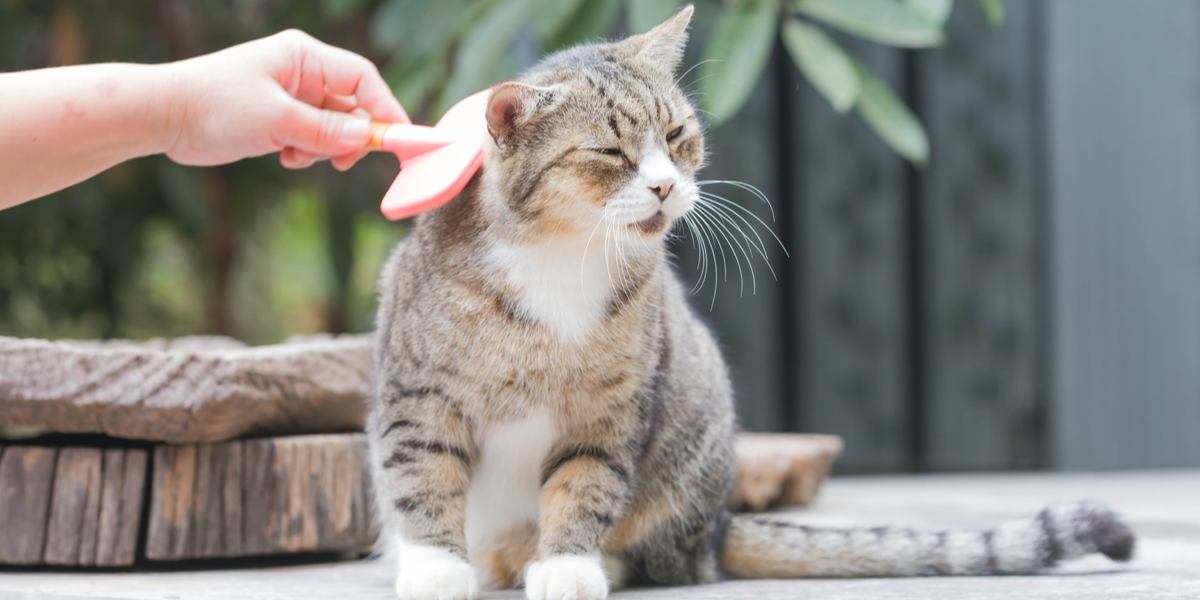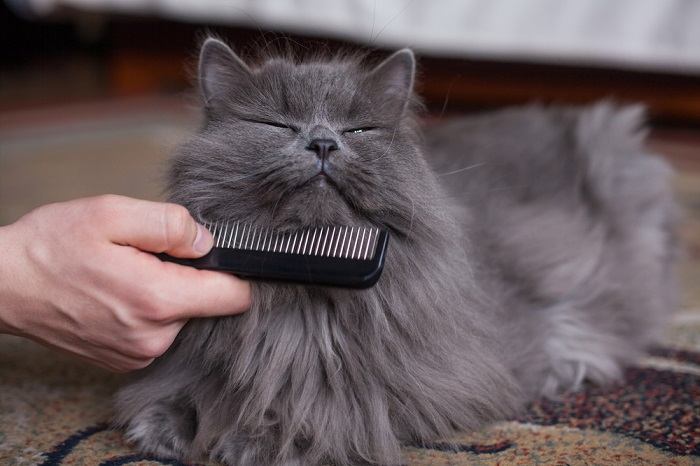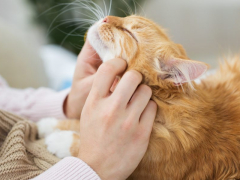
Animal videos tend to go viral on the internet—we are fascinated by their curious behavior, and their intriguing antics have millions of people hooked. Videos of cats gagging at the sound of their human running their fingers over a comb have got people asking the question, “Why?”
It’s important to say that we don’t recommend you experiment with this on your own cat at home. Not only can it be distressing and frightening for your cat, but in their fear, they could unintentionally scratch or bite you. It may seem fascinating to you, but won’t be much fun for your cat! But if you are interested to know more about this phenomenon, then read on!
How Do Cats Hear the Sound of Combs?
Cats are highly skilled hunters and are well designed for this purpose. Their senses are razor sharp. Running your fingers along the teeth of a comb creates a high-frequency sound—something that we humans cannot hear, but our feline friends can.
Cats can detect sounds from 48 Hz to 85,000 Hz, giving them one of the widest frequency ranges among mammals. Humans can only detect sounds within the range of 20 Hz to 20,000 Hz.
Why Do Some Cats React More to Combs Than Others?
Researchers don’t know for sure why some cats gag at the sound of combs, and for others, the sound can trigger a seizure. But it’s thought that cats older than 15 years, and cats suffering from underlying health conditions are at higher risk of developing audiogenic reflex seizures. For reasons currently unknown, Birmans are also at particularly high risk.
Is It Dangerous for My Cat To Gag at a Comb?

Regularly brushing your cat can help to reduce the amount of fur he ingests and, hence, the incidence of hairballs.
For most cats, gagging at combs is simply an unpleasant experience, and may be distressing to them. But for some cats, it can be more serious, as they may develop something called feline audiogenic reflex seizures. These are seizures triggered by high-pitched noises and may require long-term treatment and management.
Audiogenic Reflex Seizures
Feline audiogenic reflex seizures (FARS), sometimes known as “Tom and Jerry syndrome” is a recently discovered form of epilepsy found in cats as an extreme response to high-frequency noises. The phenomenon was studied and published by neurologists in the UK, and the findings are published here.
It’s unclear why or how this syndrome develops, but it appears to be more common in Birmans and cats more than 15 years of age, with one-third of cats in the study also suffering from underlying disease.
Also Read: Cat Seizures: Causes, Symptoms, & Treatment
The study describing this syndrome found that more than half of the cats that participated in the study were also known to be deaf (when cats lose their hearing, they tend to lose the ability to hear lower pitch sounds first, hence why they might react more to higher-pitched sounds).
Triggers

Some people have successfully trained cats to stay off counters and away from Christmas trees by temporarily covering the areas with tin foil.
The sounds that trigger FARS in cats can vary, and in addition to running your finger along a comb, other high-pitched sounds that can trigger a seizure include:
- Tin foil
- A metal spoon on a ceramic bowl
- Tapping of glass
- Crinkling of paper/plastic bags
- Tapping a computer keyboard or clicking a mouse
- Clinking of coins/keys
- Hammering a nail
Types of Seizures Associated With FARS
There are three types of seizures that have been documented to occur after cats hear a high-frequency sound
- Generalized tonic-clonic seizures: A “classic” seizure. Cats lose awareness, fall and show shaking or paddling of the legs, chewing, foaming at the mouth, and sometimes pass urine or feces. These seizures tend to last a few minutes, and afterward, cats are usually quite disorientated.
- Myoclonic seizures: These last for less than a second, and most cats appear to remain conscious. The seizure is characterized by involuntary muscle spasms and is the most common type of seizure seen in FARS, with around 95% of participating cats suffering this type of seizure.
- Absence seizure (petit mal seizure): Cats may lose awareness of their surroundings for up to 20 seconds. They sometimes stare vacantly and unresponsively into space. These seizures can be difficult to spot and are only occasionally seen in FARS.
What Should I Do if My Cat Has a Seizure After Gagging at Combs?
If your cat is unfortunate to have suffered a seizure following exposure to the sound of combs or any high-pitched sound, you should seek immediate veterinary advice. Put your cat on the floor, away from any hazards such as furniture, reassure them, and take them to vet as soon as possible. Most seizures last no more than a minute or two.
It is very useful for the vet if you can tell them how long the seizure lasted, and exactly what behaviors your cat showed before, during, and after. This will help guide treatment plans and long-term medication.
Is There Any Treatment for Audiogenic Reflex Seizures?

Effective medications are available for treating feline audiogenic reflex seizures.
Initially, the vet will assess your cat and characterize the seizure. They will ask you a number of questions regarding your cat’s behavior before, during, and after the seizure event to help guide treatment. The vet might need to give medication to bring your cat out of the seizure before starting long-term treatment.
Treatment for seizures depends on the type of seizure, and the patient’s possible concurrent health problems. The most commonly used medication to treat seizures and epilepsy in cats is phenobarbital (also known as phenobarbitone). However, the study investigating FARS found that levetiracetam was more effective in treating these particular seizures.
Also Read: Phenobarbital For Cats: Overview, Dosage & Side Effects
Levetiracetam reduces the number of myoclonic seizures in cats by half and also causes fewer side effects than phenobarbital. It’s important to note that levetiracetam is not licensed for use in cats. This is the case for many drugs we use in veterinary medicine, however, it has strong and reliable scientific evidence for its safe and effective use.
What Should I Do if My Cat Is Gagging at Combs?
If your cat is gagging at the sound of combs, or any other high-pitched noise, the first thing to do is stop the noise or move your cat away from the noise. Remember that cats have an incredibly sharp sense of hearing so if the sound is out of your control, move them somewhere as far away from it as possible.
Once your cat can no longer hear the sound, the gagging should stop. Some cats might vomit from gagging, and if they do so, they might like some plain and easy-to-digest food for dinner like plain cooked chicken or white fish.
Conclusion
It’s important to remember that not all cats will have a seizure after hearing a sudden continuous high-pitched sound. For most cats, gagging is the most common symptom and only a small number of cats will go on to suffer a seizure.
However, it is not advised that you deliberately expose your cat to high pitch sounds, and you especially should not expose them to the sound of combs to stimulate the gagging reflex out of interest or entertainment, as it could be dangerous for your feline friend.
The mechanisms by which these sounds cause cats to gag are intriguing, and further studies in the future may reveal more about this curious behavior!







